The Post-Machine-Shop Process
Making the transition from batch production to a build-to-order strategy meant removing the kinds of barriers that separated machining from the rest of manufacturing.
Share





.png;maxWidth=45)
DMG MORI - Cincinnati
Featured Content
View More

Hwacheon Machinery America, Inc.
Featured Content
View More
Autodesk, Inc.
Featured Content
View MoreThe most significant thing that can be said about the machining capability of the Dorner Manufacturing Corporation is that the machine shop no longer exists.
The machines are still there. Six machining centers, three CNC lathes, a pair of turret lathes and various CNC milling machines can be found on Dorner's production floor. In fact, the company's metalworking capability continues to grow, with a new CNC toolroom mill and various specialized machine tools recently added to the process.
What is different is that these machines are no longer grouped into a separate and distinct area of the production facility—a machine shop—the way machine tools have been grouped throughout the company's history. Instead, the machines have been dispersed. Individual machine tools now reside near assembly stations and equipment unrelated to metal cutting.
More significantly, the employees who use these machines no longer form a separate group apart from the rest of the workforce. Personnel who once were solely machinists now routinely leave the machine tool to work at other facets of production, including assembly. And personnel who once worked only in assembly have now been "cross trained" so they can operate certain machine tools as needed.
Barriers have been brought down and distinctions have been blurred at Dorner because the company recognized, starting about 4 years ago, that it needed to transform its production process. Specifically, the company saw a need to replace batch manufacturing with a build-to-order approach.
That change in philosophy drove a change in the layout of the production floor. Equipment that used to be grouped according to function (to make batch production easier) is now grouped according to product number. The objective is to make it as easy as possible for a single employee to complete a product with little advanced warning and ship it out the door. As a result, the visitor to the facility today who is looking for all of the machine tools can find them only by spotting the individual machines within various product-focused cells.
Meanwhile, employee roles have changed just as dramatically. Instead of being specialists, employees are encouraged (through the pay structure and other means) to develop as many skills as possible that are relevant to manufacturing a completed product.
Dorner made these changes for a variety of reasons. Just one reason is the growing significance of special orders for this company. In the past, manufacturing involved machining large batches of standard components and assembling large batches of standard products. Any non-standard product was difficult to produce with this approach. Says company president Scott Lucas, "Each special order was an opportunity for Sales, but it was a crisis for Manufacturing."
The move to a leaner, build-to-order model was directly intended to prevent manufacturing from being a constraint on customer service. Now that products are made in one-piece batches, within days of the order being placed, every product essentially looks like a custom product from the perspective of the production floor. In other words, special orders just aren't that special anymore.
Getting There
Dorner makes conveyors. The privately owned company in Hartland, Wisconsin, began about 40 years ago as a tool and die shop for metal stamping. In search of accessories to bring about a more automated stamping process, the shop looked for—and failed to find—a conveyor compact enough to fit within the press and carry scrap away. So the company designed its own. That conveyor became a commercially viable product, and conveyors for stamping remain a staple of the company's business to this day. The company made its last stamping die in the mid-1980s. Today, the conveyors that Dorner produces meet the needs of a broad variety of applications that involve discrete parts, products or packages.
In fact, the company's expansion into different markets contributed directly to its manufacturing challenges. Meeting the needs of differing conveyor applications led to additional product lines and more product options, as well as a broadening of the range of special needs that customers are likely to express. These factors conspired to make batch production steadily more costly.
And most of the costs were hidden. One such cost was inventory—the capital required to keep large stocks of finished product on warehouse shelves and large batches of components moving through the process. Hidden costs also resulted from the long lead time necessary to see a product to completion by means of this cumbersome approach. And yet another insidious source of cost was the common problem of late delivery—something that would occur almost any time there was a setback within a process that had little flexibility for dealing with the unexpected.
Each of these three inefficiencies—inventory, lead time and late delivery—wasted not just money and time, but also opportunity. Late delivery, for example, could result in customer relationships being badly strained.
"Back then, you could imagine us as a duck," Mr. Lucas says. "While we appeared calm above the surface, we were paddling furiously underneath just to keep up the illusion of customer service."
Dorner completely changed its production process in early 1999. It made the change at the same time that the company relocated to a new facility. The change and the move were unrelated, and carrying out both at once made the switch to lean manufacturing harder instead of easier, says Mr. Lucas. Because the company had to set up the new facility to reflect the new production model, there was no opportunity to make a gradual transition to the build-to-order approach. For example, there was no opportunity to establish one lean cell at a time while the traditional process continued around it. Instead, employees trained for the new production process over the course of about six months at the old facility, until the day came when they all began reporting to a new facility and began putting their training to use.
This clean break draws a stark line of contrast between the two processes. The most fundamental difference between the old way and the new way comes down to this: Where the old process focused on part, machine and labor costs (the costs that make batch manufacturing look attractive), Dorner today places its emphasis on reducing inventory, lead time and product costs, as well as improving on-time delivery, all while remaining responsive to custom orders. The many changes in the way the company conducts its production process all flow from this change in its thinking.
Differences
Old way: Employees were specialists and machine tools were standard.
New way: Employees are flexible, and specialized machines are OK.
The way to establish a build-to-order process is to remove any obstacle that might halt the flow of production. One potential obstacle is the danger that an employee able to perform some necessary operation won't be available to perform it at the moment that it needs to be done. Cross training answers this problem by ensuring that an employee can perform any of a number of different operations as needed.
But cross training can also serve the work flow in ways that are less direct, because the cross-trained employee has a larger perspective on the process overall. An employee who drills a hole, for example, may have to use that very hole during assembly. Experiences like this can lead to insights about how to improve either the process or the product to make manufacturing easier. Dorner actively elicits these insights from employees and works to incorporate them back into the process.
But while specialization is discouraged for employees, it is often seen as the preferred choice for machine tools. The machine shop of the past at Dorner would not have used specialized machinery, favoring off-the-shelf machine tools instead. Now, by contrast, a PLC-controlled custom machine is dedicated to drilling patterns of holes for a particular family of parts, while another part family is both drilled and polished at another custom machine. These machines quickly perform sets of operations that would otherwise require multiple setups, if not multiple different machines. In this way, the dedicated machine tools let the work flow faster.
Old way: Machine tools were bought to increase capacity.
New way: Machine tools are bought to open bottlenecks.
Randy Meis, Dorner's director of manufacturing and a relatively new hire for the company, says he has no problem seeing a CNC machine tool sit idle. This would certainly not have been the case at any of the other manufacturing facilities where he has worked. But at Dorner, gone are the days when machine tool purchases were determined simply by a raw tally of the number of pieces to be run. Also gone is the expectation that a machine must pay its way by continuously cutting parts for as many hours as possible throughout the day. Today, it's better that a machine should wait for parts than a part should have to wait for a machine.
The value of a machine tool now is determined by its strategic importance to the process. This importance can result from the machine's capabilities or from its location on the production floor. If an additional machine tool can significantly improve workflow, then Dorner sees that as reason enough to buy the machine, even if there is open time available on some comparable yet far-removed machine that is important to a different portion of the facility.
Old way: Equipment was stationary.
New way: Machines are in motion.
Dorner's facility is arranged according to product lines, with each cell laid out to let employees produce a particular product type efficiently. Keeping this approach up-to-date, and also as efficient as possible, means changing the layout to reflect both changing product demands and the process improvements that are developed by employees. Thus the manufacturing area undergoes what is essentially an ongoing relocation, with equipment and work stations subject to being moved at any time.
The new building facilitates this movement, providing flexible connections for electricity, shop air and data at regular intervals throughout the production floor.
Old way: Engineers and purchasers primarily reacted to problems.
New way: Engineers and purchasers are proactive, providing front-end support.
The "fires" that manufacturing engineers used to spend their time putting out most often related to scheduling or work flow. Today, employees on the production floor have the skills and autonomy to deal with most problems of this type. In the same way, purchasing managers have been relieved of some of their traditional burdens, because the shop's kanban system considerably streamlines the purchasing process. ("Kanban" refers to a method of lean inventory management in which empty supply bins trigger the orders that refill them.) The resulting free time for engineers and purchasers both allows these employees to take larger views of the process they serve.
Of the two groups, purchasing managers have seen the greatest change in their responsibilities. Instead of continually managing reorders, these employees are now tasked with searching for new sources of supply and evaluating suppliers for how well they fit with Dorner's build-to-order approach.
For manufacturing engineers, time formerly spent fighting fires on the back end is now spent improving the process on the front end. The engineering department evaluates employee suggestions for manufacturing improvements and incorporates these changes into the process. Engineering is also applied to frequently overlooked support functions, including creating clear work instructions. (See photo on page 95.)
Old way: Outside suppliers set the rules, based on the type of product or service they provided.
New way: All suppliers, of all products and services, must follow the build-to-order model.
Scott Lucas says that outside suppliers—not all of Dorner's suppliers, but enough of them—provide the biggest obstacle to achieving a truly lean production floor.
He met with each supplier before the company made its transition. Some immediately understood, in many cases because they were already serving customers who had made the same transition. Other suppliers were far more resistant, insisting that they could not possibly offer their product or service on a short-run, as-needed basis.
Today, supplier restrictions account for the majority of the cases where Dorner still must produce components in large batches. For example, a machined part used in certain conveyors has to be coated, and there is no practical way for the coating supplier to provide this service in anything other than large batches.
The situation is fine for now, Mr. Lucas says. But over the long term, company engineers will deal with this problem by looking for ways to avoid the need for a coated component in future product designs.
"That's been my message to suppliers," Mr. Lucas says. "Don't hold us back, because if you do, we will design you out of the process."
Old way: Employees at desks all sat in a secluded area.
New way: "Office" employees have their desks on the production floor.
The distinction between machining and assembly is not the only artificial barrier that Dorner has brought down. The distinction between "office" and "production floor" is another such barrier, one that creates inefficiency wherever production and office personnel have a need to interact routinely. To overcome this inefficiency, Dorner has moved desks and cubicles to the production floor. Engineering and purchasing personnel now work there instead of in the office.
One of the former office employees now stationed closer to production is the company's primary CAM programmer. Putting him close to the production area, where he can converse daily with the very employees who use his programs, helps the company in its effort to capture the employees' feedback for the sake of a more efficient process.
Manufacturing director Mr. Meis says barriers are coming down in this way throughout the company, and not just as they relate directly to the production floor.
"One problem with the term ‘lean manufacturing' is that it makes the emphasis too narrow," he says. "Manufacturing can't be lean unless the organization supporting it is lean as well. ‘Lean enterprise' would be a better term."
Read Next
Registration Now Open for the Precision Machining Technology Show (PMTS) 2025
The precision machining industry’s premier event returns to Cleveland, OH, April 1-3.
Read MoreBuilding Out a Foundation for Student Machinists
Autodesk and Haas have teamed up to produce an introductory course for students that covers the basics of CAD, CAM and CNC while providing them with a portfolio part.
Read More5 Rules of Thumb for Buying CNC Machine Tools
Use these tips to carefully plan your machine tool purchases and to avoid regretting your decision later.
Read More



























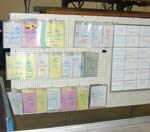

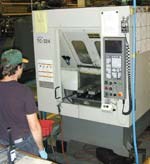

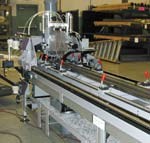
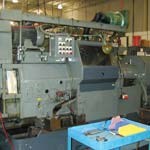
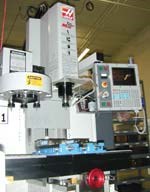
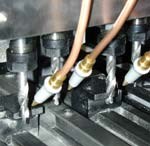
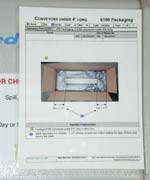










.jpg;maxWidth=300;quality=90)












